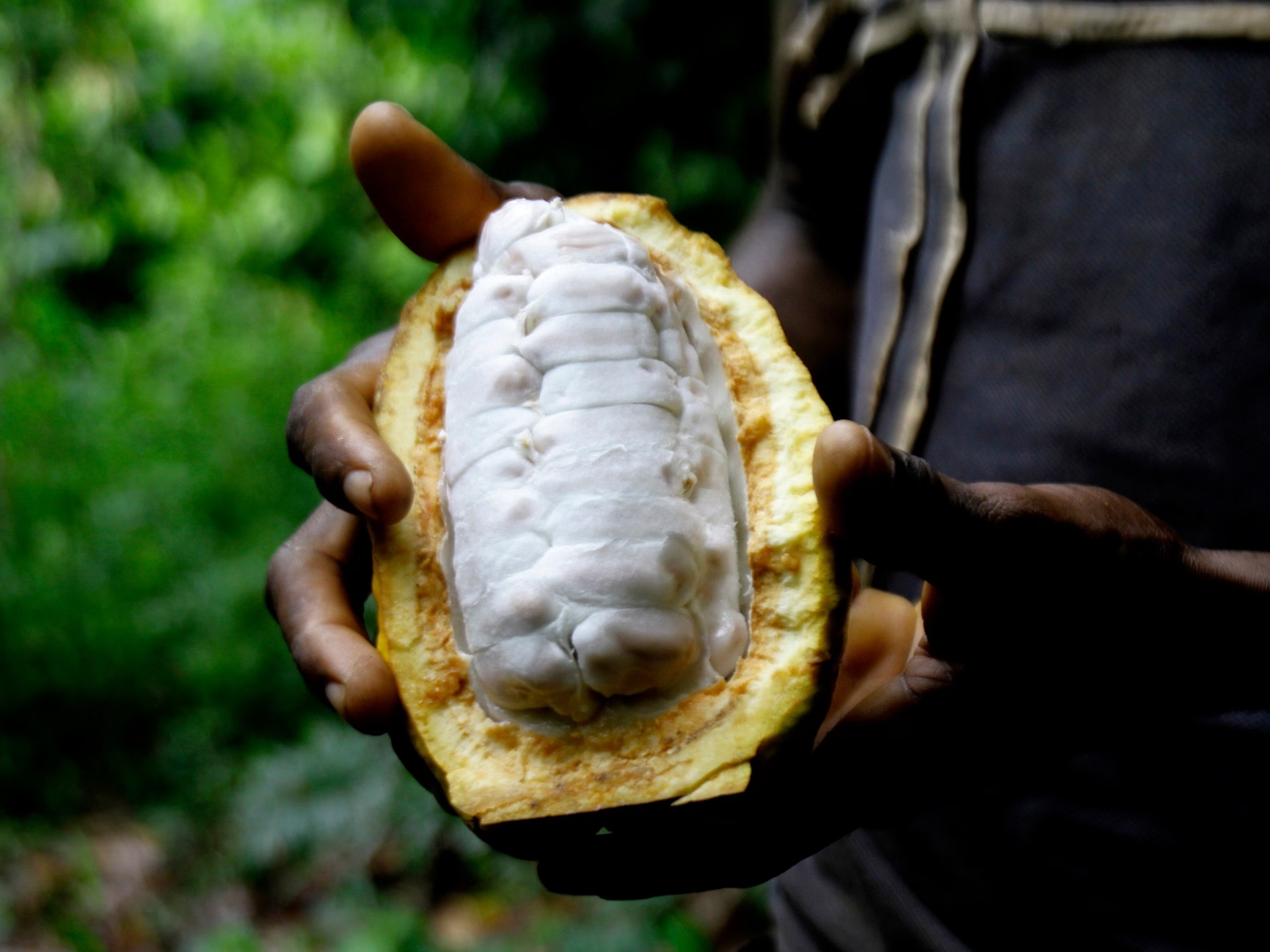According to Wells Fargo Bank, retail chocolate prices in the US were one-fifth higher this Valentine’s Day compared to last year. The price of a king-size Reese’s Hearts chocolate bar was 13 percent higher in February 2024 compared to the same month the previous year.
In the United Kingdom, the price of a Twix white chocolate Easter egg rose from 5 to 6 pounds ($6.63 to $7.96) at Tesco supermarkets in the lead-up to Easter. Additionally, the size of the product was reduced from 316g (11oz) to 258g (9oz), resulting in a unit price increase of 47 percent.
Despite a 20 percent drop in the price of cocoa since its all-time high in December 2024, consumers are still paying record prices for chocolate.
The increase in the price of cocoa can be attributed to several factors, including extreme weather conditions affecting cocoa producers in West Africa, from where the majority of the world imports cocoa.
Amber Sawyer, an analyst at the environmental think-tank Energy and Climate Intelligence Unit (ECIU), believes that the increase in chocolate prices shouldn’t come as a surprise given the impact of climate change on extreme weather conditions, which will continue to worsen.
What has happened to the price of cocoa?
Benchmark New York futures contracts, used to trade cocoa at a specified future date and price, reached a high of $12,565 per metric tonne in December 2024.
Last year’s poor cocoa harvest led to record supply shortfalls as adverse weather conditions and diseases devastated crops in Ghana and the Ivory Coast, which account for two-thirds of the world’s cocoa production.
Shortages were also reported in Nigeria and Indonesia, the third- and fourth-largest cocoa producers.
Overall, there was a 500,000-tonne deficit of cocoa in global markets in 2024, which continues to keep prices high.
While the latest cocoa harvest showed signs of improvement, with 33 percent more beans imported to Ivory Coast compared to last year, concerns persist that dry weather could similarly impact this year’s crop.
This uncertainty is affecting chocolate producers. Barry Callebaut, a Swiss chocolate company, reduced its annual sales forecasts due to significant volatility in cocoa prices, resulting in a near 20 percent drop in share value – its largest one-day decline.
What is causing the rise in prices?
Weather
Volatile weather is one of the main contributors, with West Africa experiencing extreme rainfall in 2023 and intense heat and drought in 2024.
Many climate scientists attribute the extreme weather to the El Niño phenomenon, which occurs every three to five years and alters global weather patterns. However, there is hope for a possible transition to the La Niña phase, which could temporarily improve cocoa production.
The International Cocoa Organization forecasts a global net surplus of 142,000 metric tonnes for 2024/2025 – the first surplus in four years – which partially explains the price decline.
But according to Felipe Pohlmann Gonzaga, a commodity trader based in Switzerland, climate change will further exacerbate supply concerns in the long term.
Laws against deforestation
In West Africa, new deforestation laws have limited the expansion of cocoa plantations, thereby affecting supply.
Additionally, West Africa is dealing with aging cocoa trees and underinvestment in the industry.
Disease
The spread of the cocoa swollen shoot virus (CSSV) has also affected harvests, with a study suggesting that Ivory Coast cocoa production could halve due to the virus.
Illegal gold mining
Ghanaian cocoa farmers are turning to gold mining due to its increased value, driven by financial market turmoil caused by trade tariffs.
Will cocoa prices continue to rise?
“Tariffs have had an impact on the value of commodities, and cocoa is no exception,” says Pohlmann Gonzaga. It is expected that US consumption will maintain demand and, potentially, drive up prices. Recent increases in chocolate consumption in East Asia have also been noted.
In the short term, Pohlmann Gonzaga predicts that prices will trend sideways, as various factors offset each other, leading to continued volatility.
How have chocolate manufacturers responded?
Manufacturers have responded to the higher costs either by passing them onto consumers or by promoting products with less cocoa or alternative ingredients.
Nestle, for example, introduced a hazelnut-flavoured chocolate bar to its Aero line, while Cargill partnered with Voyage Foods to distribute cocoa-free bars made from grape seeds and sunflower flour.
Startups like Nukoko and Planet A are exploring microbial fermentation techniques to enhance or replicate the flavors of chocolate, while Dubai chocolate, which uses pistachio and tahini, has become a social media sensation.
If cocoa prices continue to rise, there is a likely increase in cocoa substitutes on supermarket shelves, but the question remains whether consumer preferences will change.






